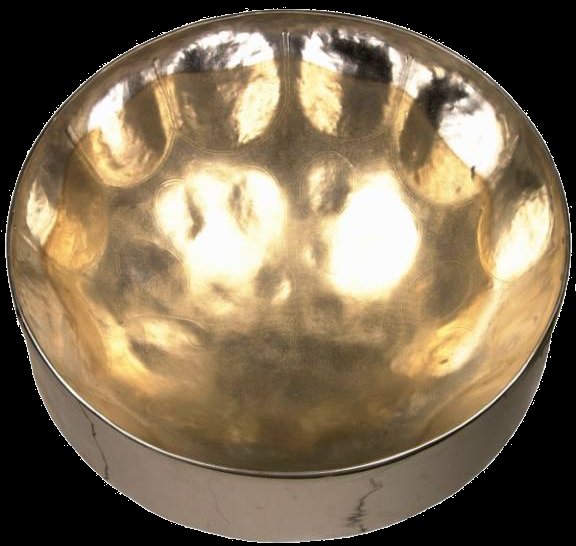|
Making a Steel Drum is next to impossible for a beginner! Aspiring pan makers will apprentice for up to ten years before being able to make a good quality pan. The Toucans get all their steel drums from a Trinidadian friend of theirs named Otto "Boots" Faustin. Born in 1952 in a small village north of Port-of-Spain, Otto began making steel drums as a youth in Trinidad in the early 1950's, and played and tuned for the Blue Diamonds, one of Trinidad's finest steel bands.
There are 3 phases involved in the creation of this unique instrument. First, a 55-gallon oil drum is selected for the quality of its steel. A 40-pound sledgehammer is then applied to the bottom of the barrel, stretching the metal into a concave bowl or dish shape. This is called "sinking the pan" and is the noisiest and most physically exhausting part of the process. It is very important to stretch the metal evenly without tearing it or deforming the rim. Sinking a pan can take up to 5 hours of hammering!
After sinking the pan, the steel must then be tempered to increase the resilience and strength of the metal. In Trinidad, pan makers will take their drums down to the beach and build a fire. After burning the pan for a short of period of time, it is then plunged into the ocean, which cools off the red-hot barrel. This process is called "tempering", and it makes the metal a lot stronger than it was before. The barrelhead is now able to withstand the rigors of the tuning process.
A template is used to mark the placement of each note on the sunken head of the drum. Lines are drawn in pencil to guide the tuner's hammering. Each note outline is then "grooved" using a nail punch and a hammer. Grooving the notes make the notes more visible and also isolates each note's vibration somewhat from the other notes in the drum. It is very important not to weaken or break the metal with the nail punch during the grooving process.
At this point, the barrels side, or "skirt", is cut to the proper length, and holes are drilled near the rim to hang the drum from a stand with wire or rope. The pan maker then takes his hammers of various sizes and "pongs" the notes up from beneath, making them stand out like bubbles from the interior of the pan. This gives the note the approximate tension it needs to vibrate at the correct pitch.
Now, the pan maker uses a tuning device, like a keyboard or a stroboscope, and carefully hammers at each note from the top, stretching it and smoothing the note area so that it will vibrate precisely. Each individual note on the drumhead must be tuned in relation to the other notes, or the pan will not "sing" correctly. Often a pan maker will tune each note several times before the whole pan is fully "blended" together.
| Steel Pan |

|
| Finished Product |
|